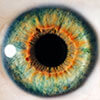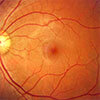It was January 15th, 2005 when the FDA approved Macugen, the first anti-VEGF treatment for neovascular AMD (nAMD). Within 6 months, Phil Rosenfeld, MD, out of Bascom Palmer Eye Institute, published the first paper touting the efficacy of Avastin.1 Lucentis and Eylea became commercially available within the next 5 years, and treatment paradigms have witnessed little change in clinical practice since their arrival.
At this time, the majority of ASRS retinal specialists, 87% according to the 2019 PAT Survey, follow the treat and extend protocol, which includes three initial loading doses of monthly injections, followed by an extension of treatment intervals based on individual response.2 Once stable, most patients under these algorithms achieve ongoing treatment at intervals between 6-8 weeks with either Avastin, Lucentis or Eylea. Most importantly, approximately 90% of patients are able to avoid progressive vision loss with treatment. However, under these protocols, injections never cease as the underlying factors for the development of nAMD are not cured but mitigated. As we continue to care for a growing and aging population, the increasing incidence of nAMD coupled with high frequency treatment modalities, creates a significant burden for these patients, physicians, and our healthcare systems.3
In light of these factors, there has been a notable surge in the research and development of pharmaceuticals and alternative therapies that will potentially change the future of how we treat neovascular AMD. These new modalities may not only reduce the treatment burden, but may provide better outcomes. The next generation of treatment is just around the corner, and there are many exciting and innovative approaches to overcoming these challenges.
LONGER ACTING MEDICATIONS
First, as we have achieved great efficacy in treating nAMD with anti-VEGF drugs, the Holy Grail that would create a paradigm shift in treatment would be the development of medications that can maintain a longer duration of effect once employed. In reviewing ongoing clinical trials and FDA approvals, there are currently four injectable drugs that show appreciable promise. The first drug is Novartis’ Beovu, which has already been approved by the FDA and has shown the ability to extend treatment intervals up to three months in-between injections. The clinical trial also demonstrated a higher aptitude for the reduction of subretinal and intraretinal fluid versus other anti-VEGF agents. At NW Eye, we have already started to utilize this drug in our treatment of nAMD. Second on the list is Allergan’s Abicipar, which recently entered phase 3 clinical trials and is expected to last up to three months in between treatments. It should be known that their trial has unfortunately been halted due to unexpected rates of intraocular inflammation. Third, is the KSI-301 anti-VEGF biopolymer conjugate from Kodiak Sciences, which is currently in the midst of Phase 3 trials. Kodiak just recently released their phase 1b results in which 78% of nAMD patients achieved a treatment interval of 4 months or longer at Year 1.4 Lastly, there is Sunitinib, by GrayBug Vision, which once injected into the eye, it forms an intravitreal plaque composed of biodegradable drug eluting cells. Their phase 1/2a studies demonstrated treatment intervals of 3 months for 90% of patients, whereas up to 70% were able to delay treatment up to 6 months. The current timeline for Sunitinib may be at least 3 years before submission for approval to the FDA.5

DRUG DELIVERY SYSTEMS
Another approach to circumventing the nAMD injection burden is to implant a drug eluting reservoir into the eye, which has been accomplished by Genentech’s PDS or “port delivery system.” This device is surgically implanted via the pars plana and then subsequently refilled via an in-office injection of a customized form of Lucentis. In Phase 2 trials, this delivery system showed remarkable promise in that the median retreatment interval was 15 months with outcomes equivalent to monthly injections of Lucentis. Their Phase III Archway trial demonstrated the best efficacy at q6month dosing and will hopefully be approved by the FDA in the near future.6

COMBINATION THERAPIES
Lastly, research has also shifted into identifying molecules other than VEGF as potential influences of the development of nAMD. In particular, the protein, angiopoietin-2 (Ang-2), has been implicated in this pathway and subsequently targeted with therapies that are combined with anti-VEGF. There are two main contenders in this bispecific molecule domain. The first to meet their primary endpoint in Phase 3 clinical trials is the Roche/Genentech combo molecule, faricimab, which demonstrated efficacy at 4 month intervals with equivalency to monthly Lucentis.7 The alternate in this race is Opthea’s OPT-302, which is injected separately in combination with Lucentis at 4 week intervals. The results of their Phase 2b trials demonstrated superior vision gains and greater reduction of intraretinal/subretinal fluid as compared to Lucentis alone.8 Phase 3 trials are slated for the near future.
FUTURE THERAPIES
Additionally, there are other potential novel applications that are further down the pipeline for treatment of nAMD and dry AMD. One approach includes the implementation of gene therapies, of which there are 2 ongoing investigations for nAMD and one for geographic atrophy in dry AMD. Another alternative is the continued research into the use of stem cells to create tissue implants that can replace damaged retinal cells via surgery.
CONCLUSION
The ongoing battle against vision loss and the associated treatment burden for nAMD has a vast group of contenders that inevitably have the potential to facilitate a paradigm shift that will revolutionize our care and treatment. Not only is the expectation that science will improve the visual outcomes for patients with sight threatening diseases, but will also enrich their quality of life while reducing the burden on the health care system.
References
- Rosenfeld PJ, Moshfeghi AA, Puliafito CA. Optical coherence tomography findings after an intravitreal injection of bevacizumab (avastin) for neovascular age-related macular degeneration. Ophthalmic Surg Lasers Imaging. 2005 Jul-Aug;36(4):331-5. PMID: 16156152.
- Singer, M. (2020, September 01). Retinalphysician.com. Retrieved February 15, 2021, from https://www.retinalphysician.com/newsletter/retina-minute/september-2020
- Prenner JL, Halperin LS, Rycroft C, Hogue S, Williams Liu Z, Seibert R. Disease Burden in the Treatment of Age-Related Macular Degeneration: Findings From a Time-and-Motion Study. Am J Ophthalmol. 2015 Oct;160(4):725-31.e1. doi: 10.1016/j.ajo.2015.06.023. Epub 2015 Jul 2. PMID: 26142721.
- Kodiak Sciences. (2021, February 13). Kodiak sciences Announces 1-year Durability, efficacy and safety data from Ongoing Phase 1b study Of KSI-301 in patients with Wet age-related macular degeneration, Diabetic macular edema and Retinal VEIN Occlusion at the ANGIOGENESIS, Exudation and Degeneration 2021 annual meeting. Retrieved February 15, 2021, from https://ir.kodiak.com/news-releases/news-release-details/kodiak-sciences-announces-1-year-durability-efficacy-and-safety
- Boyer, D. (2019, January 22). Novel Anti-VEGF for wet AMD Meets SAFETY, TOLERABILITY ENDPOINT. Retrieved February 15, 2021, from https://www.healio.com/news/ophthalmology/20190122/novel-antivegf-for-wet-amd-meets-safety-tolerability-endpoint
- American Academy of Ophthalmology (2018, October 26). Easier, potentially more effective treatment for blinding eye disease shows promise in clinical trial. Retrieved February 15, 2021, from https://www.aao.org/newsroom/news-releases/detail/easier-potentially-more-effective-treatment-blindi
- Genentech. (2019, March 07). Roche/Genentech initiate two large Phase 3 studies in WET AMD For BISPECIFIC Molecule, Faricimab. Retrieved February 15, 2021, from https://eyewire.news/articles/roche-genentech-initiate-two-large-phase-3-studies-in-wet-amd-for-bispecific-molecule-faricimab/
- Opthea. (2019, September 06). Opthea presents positive data FROM OPT-302 Phase 2B WET Amd trial AT Euretina congress. Retrieved February 15, 2021, from https://www.globenewswire.com/news-release/2019/09/06/1912077/0/en/Opthea-Presents-Positive-Data-from-OPT-302-Phase-2b-Wet-AMD-Trial-at-EURETINA-Congress.html

Author: Richard Lee, OD
Specialties: Medical Eye Care
Seattle & Renton
Paul Griggs, MD and I have worked together for over 20 years specializing in the surgery and diseases of the retina and vitreous. We have witnessed several key transformations in the care of both surgical and medical conditions, each proving to enhance outcomes for patients and improve the quality of many lives. The evolution of care for nAMD is exciting and challenging. We are committed to practice at the leading edge of technology and treatment, and look forward to incorporating these modalities to enhance the care and treatment of patients with retinal disease within our communities.









